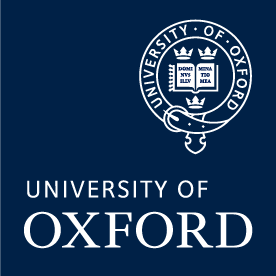
Websites
-
Nuffield Laboratory of Ophthalmology
Research Centre
-
Sleep and Circadian Neuroscience Institute
Research Group
-
Kavli Institute for Nanoscience Discovery
Research centre
Biography
Russell Foster is Professor of Circadian Neuroscience and the Head of Department of Ophthalmology. He is also a Nicholas Kurti Senior Fellow at Brasenose College. Prior to this, Russell was at Imperial College where Russell was Chair of Molecular Neuroscience within the Faculty of Medicine. Russell Foster’s research spans basic and applied circadian and photoreceptor biology.
He received his education at the University of Bristol under the supervision of Professor Sir Brian Follett. from 1988–1995 he was a member of the National Science Foundation Center for Biological Rhythms at the University of Virginia and worked closely with Michael Menaker. In 1995 he returned to the UK and established his group at Imperial College. For his discovery of non-rod, non-cone ocular photoreceptors he has been awarded the Honma prize (Japan), Cogan award (USA), and Zoological Society Scientific & Edride-Green Medals (UK). He is the co-author of “Rhythms of Life” a popular science book on circadian rhythms.
Russell Foster
BSc PhD FRS
Head of the Nuffield Laboratory of Ophthalmology and the Sleep and Circadian Neuroscience Institute
- Chair of Circadian Neuroscience
Research Summary
My research interests span both visual and circadian neurobiology with the main focus on the mechanisms whereby light regulates vertebrate circadian rhythms.
All life on earth has evolved under a rhythmically changing cycle of light and darkness, and organisms from single-celled bacteria up to man possess an internal representation of time. These 24 hour cycles, termed circadian rhythms, persist in the absence of external cues, and provide a means of anticipating changes in the environment rather than passively responding to them. In mammals, including man, light provides the critical input to the circadian system, synchronising the body clock to prevailing conditions. The photoreceptors providing this input are found in the retina, consisting of the classical rods and cones which enable image-formation, as well as a recently identified subset of photosensitive retinal ganglion cells (pRGCs).
The research interests of our group range across the neurosciences but with specific interests in circadian, visual and behavioural neuroscience. This covers such topics as how circadian rhythms are generated, the diverse functions these rhythms serve, how this system is regulated by light, the role of classical and novel photoreceptors in both visual and circadian light perception, and genetic disorders of these systems. This work includes a range of molecular, cellular, anatomical and behavioural aspects, as well as addressing the implications for human performance, productivity and health.
Sources of Funding
Recent publications
-
Dreaming of Better Treatments: Advances in Drug Development for Sleep Medicine and Chronotherapy.
Journal article
Prakash BA. et al, (2025), J Sleep Res
-
Daylight-Saving Time & Health: A Systematic Review of Beneficial & Adverse Effects
Preprint
Steponenaite A. et al, (2025)
-
Hypotheses in light detection by vertebrate ancient opsin in the bird brain.
Journal article
Stevenson TJ. et al, (2025), J Neuroendocrinol
-
Sleep and mood in central serous chorioretinopathy.
Journal article
Yang Y. et al, (2025), Eye (Lond)
-
Evaluation of the Digital Ventilated Cage® system for circadian phenotyping.
Journal article
Tir S. et al, (2025), Sci Rep, 15

